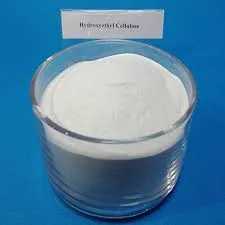
Sep . 23, 2024 19:19 Back to list
Understanding HPMC Grades and Their Applications in Various Industries
HPMC Grades and Their Uses
Hydroxypropyl Methylcellulose (HPMC) is a versatile cellulose ether that has garnered significant attention in various industries due to its unique properties and functionality. Derived from natural cellulose, HPMC is synthesized through the reaction of cellulose with propylene oxide and methyl chloride. This article provides an overview of the different grades of HPMC and their respective applications across various sectors, such as pharmaceuticals, food, and construction.
Overview of HPMC Grades
HPMC is categorized based on its viscosity, substitution type, and gel-forming capabilities. The primary classifications are high viscosity, medium viscosity, and low viscosity grades. These differences in viscosity and substitution levels dictate the specific applications for each grade.
1. High Viscosity HPMC This grade exhibits high thickening properties and is commonly used in formulations requiring substantial viscosity. Its water retention capability makes it an ideal choice for applications in adhesives, coatings, and other formulations where a thick, stable product is needed.
2. Medium Viscosity HPMC Medium viscosity HPMC strikes a balance between thickness and fluidity. This grade is popular in the pharmaceutical and cosmetic industries for its emulsifying properties, as it helps to stabilize formulations that contain both oil and water. Its versatility also makes it suitable for various food applications, such as in sauces, dressings, and baked goods, where it contributes to texture and mouthfeel.
3. Low Viscosity HPMC Low viscosity grades are designed for applications where a thinner consistency is desired. This type of HPMC is often utilized in sprayable adhesives or coatings where quick application and rapid drying times are crucial. In the pharmaceutical sector, low viscosity HPMC is used in oral dosage forms, such as tablets and capsules, where it provides a controlled release of active ingredients.
hpmc grades and uses

Applications of HPMC
Pharmaceutical Industry HPMC plays a pivotal role in the pharmaceutical industry, particularly in the formulation of oral dosage forms. Its ability to act as a binder, coating agent, and controlled-release polymer makes it indispensable. When used in tablet formulations, HPMC can enhance the mechanical strength and stability of the tablets while ensuring a consistent release of medications into the body. Moreover, it is widely employed in the production of hydrophilic matrix systems, which enable extended drug release profiles.
Food Industry In the food sector, HPMC serves as a thickening agent, emulsifier, and stabilizer. Its use in low-fat and gluten-free products has gained popularity because it provides texture and improves mouthfeel without adding significant calories. Notably, HPMC can replace eggs in certain formulations, offering a plant-based alternative that appeals to vegans and those with egg allergies. Additionally, HPMC is utilized in bakery products to retain moisture and freshness, prolonging shelf life.
Construction Industry HPMC is extensively used in the construction industry, particularly in cement-based products. Its properties enhance the performance of mortars, grout, and plasters by improving workability, water retention, and adhesion. HPMC also helps in preventing cracking and sagging in plaster applications, ensuring a smoother finish. Furthermore, its ability to create a stable suspension makes it a valuable additive in tile adhesives, enhancing bonding strength and flexibility.
Personal Care and Cosmetics HPMC is prominent in personal care and cosmetic formulations, where it acts as a thickener, emulsifier, and film-forming agent. Its ability to create a long-lasting film makes it ideal for products such as lotions, gels, and shampoos. Additionally, HPMC modifies the viscosity of products, providing the desired texture and application performance.
Conclusion
Overall, Hydroxypropyl Methylcellulose is a multifunctional ingredient with diverse applications across various industries. With its range of grades tailored to specific needs, HPMC continues to be a crucial component in pharmaceutical formulations, food products, construction materials, and personal care items. As industries evolve and demand for more sustainable and versatile components increases, HPMC’s importance is likely to grow, solidifying its place as a key material in modern formulations.
-
Versatile Hpmc Uses in Different Industries
NewsJun.19,2025
-
Redispersible Powder's Role in Enhancing Durability of Construction Products
NewsJun.19,2025
-
Hydroxyethyl Cellulose Applications Driving Green Industrial Processes
NewsJun.19,2025
-
Exploring Different Redispersible Polymer Powder
NewsJun.19,2025
-
Choosing the Right Mortar Bonding Agent
NewsJun.19,2025
-
Applications and Significance of China Hpmc in Modern Industries
NewsJun.19,2025







